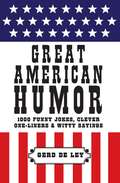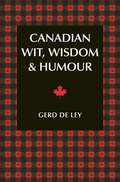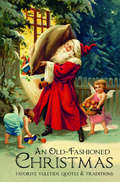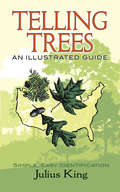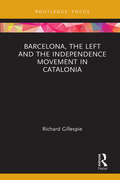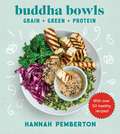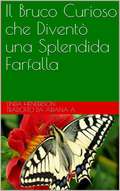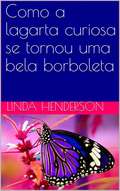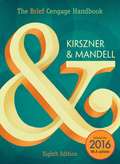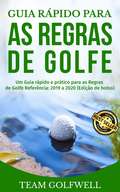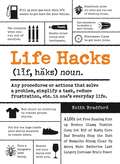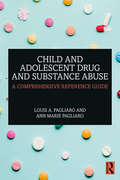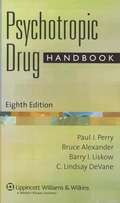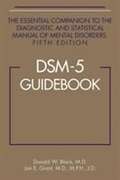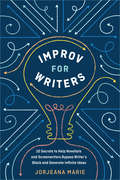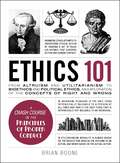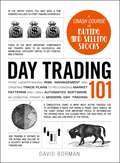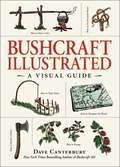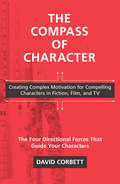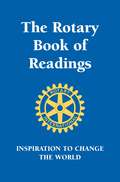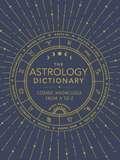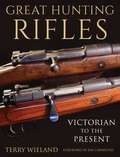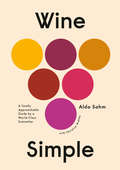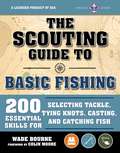- Table View
- List View
Great American Humor: 1000 Funny Jokes, Clever One-Liners & Witty Sayings (Little Book. Big Idea.)
by Gerd De LeyMark Twain wrote: "Humor is mankind's greatest blessing." Consider yourself blessed a thousand-fold with the new compilation Great American Humor by Gerd de Ley. Great American Humor collects 1000 wise and witty jokes, clever sayings and smart one-liners from well-known American humorists, actors, comedians, politicians, and personalities into a terrific volume guaranteed to generate laughs. Great American Humor features quips and quotes from well-known figures such as Mark Twain, Steve Martin, Bette Midler, Milton Berle, Ellen DeGeneres, Rodney Dangerfield, Robin Williams, Mae West, Mitch Hedberg, Joan Rivers, George Carlin, and the list goes on. Carefully researched and culled for maximum guffaws, Great American Humor captures the unique spirit of American wit and features more than enough jokes, puns and riddles to have everyone laughing.
Canadian Wit, Wisdom & Humour: The Complete Collection of Canadian Jokes, One-Liners & Witty Sayings
by Gerd De LeyCanadian Wit, Wisdom & Humour collects the very best of humorous quotes, witty observations and funny one-liners from famous--and not-so-famous--Canadians. Collecting over 1000 of the wittiest remarks, deepest thoughts and side-splitting one-liners ever attributed to a Canuck, Canadian Wit, Wisdom & Humour features those writers, actors, comedians, politicians, and personalities that best represent the nation of Canada, including Margaret Atwood, Pierre Légaré, O.A. Battista, Norm McDonald, Mike Myers, Jim Carrey and many, many more!
An Old-Fashioned Christmas: Favorite Yuletide Quotes and Traditions
by Jackie CorleyA collection of inspirational, meaningful and fun quotes celebrating the spirit of Christmas.Deck the halls with boughs of jolly and the An Old-Fashioned Christmas. Chock full of holiday sentiments and joyous words, this Christmas quote book is the perfect stocking stuffer book for the season.
Telling Trees: An Illustrated Guide
by Julius KingWhat's the difference between an oak and a maple, a spruce and a pine, an ash and a sycamore? With this portable guide, you'll be able to distinguish between more than 100 common American trees. Take it along on walks and hikes for quick, accurate reference to brief, nontechnical descriptions and hundreds of illustrations.Each page features a map showing the tree's geographical range, and each illustration includes a background scale to help determine size. Leaves, needles, cones, flowers, fruit, and other details are clearly noted. Most trees are depicted in their full summer glory, but a key to identifying trees in winter is included, along with a helpful Index.
Barcelona, the Left and the Independence Movement in Catalonia (Europa Country Perspectives)
by Richard GillespieCreated by social movement activists and left-wing parties during years of austerity, Barcelona en Comú, or the Comuns (as they are known in Catalan), won control of the city council of Barcelona in May 2015. The ensuing municipal government gave the city its first ever female mayor in the form of former housing rights campaigner Ada Colau. The Comuns' administration proceeded to undertake ambitious initiatives, attempting to regenerate democracy by changing the relationship between municipal authority and citizen, addressing social inequality issues and seeking to curb the hitherto unbridled tourist expansion in the name of improving the environment for those who live in the Catalan capital. This book examines the extent to which the political project of the Comuns has brought radical change in Barcelona, where it has faced opposition from revolutionary anti-capitalists, traditional Catalan nationalists and independentistas, as well as conservative political and economic forces. It also considers the Comuns' relationship to Podemos and their prospects of growing beyond the city, in the metropolitan area of Barcelona and across Catalonia.
Study Guide for the National Counselor Examination and CPCE
by Andrew A. HelwigThe Study Guide for the National Counselor Examination and CPCE has been revised and updated. Over 400 pages long, the study guide covers the eight CACREP content areas found on the NCE, CPCE, and many similar exams. There are revisions throughout this edition and new material has been added in the following areas: relational-cultural theory, changes in workforce trends, value conflicts between counselors and clients, HIPAA updates, initiatives in licensure portability, societal stress and the opioid crisis, and updates in the use of technology in distance counseling. The Study Guide includes two practice exams, study tips, test taking strategies, the ACA Code of Ethics and additional exam prep resources. Because the information in the eight content areas is double-spaced, with considerable outlining of material and the BOLDING of important concepts, the study material is manageable and the book is user-friendly.
Buddha Bowls: Grain + Green + Protein
by Hannah PembertonDiscover the new, easy way to enjoy balanced vegetarian and vegan meals with Buddha Bowls. Just follow the very simple formula: Grain + Green + Protein (+ Zen!) for meals that are tasty, nourishing and easy to make. Tempting dishes take you through the day from breakfast to dinner and everything in-between, including: Chia Pudding, Huevos Rancheros, Bang Bang Dressing, Beet Falafel, Beet Quinoa Porridge, Super Nutty Sesame Tofu, Shiitake “Bacon” And many more! All recipes are vegetarian or vegan, and vegan swaps are provided throughout. Simple meals are created with inexpensive ingredients that you can easily find in your local supermarket. These recipes are designed to feed one, for easy week-night solo cooking, but can easily be doubled-up to feed a crowd. Eating dishes that are both clean and green, yet actually taste good, won&’t seem so difficult anymore with Buddha Bowls!
Il Bruco Curioso che Diventò una Splendida Farfalla
by Linda HendersonQuesta storia insegna ai bambini e alle bambine la verità sulla meravigliosa trasformazione che avviene quando un bruco diventa una farfalla. Il testo spiega l’evoluzione passo per passo, a un livello che possa risultare comprensibile ai più piccini e alle più piccine. Se volete spiegare ai vostri figli come nascono le farfalle, questo pratico libricino fa al caso vostro. In aggiunta, i contenuti si lega all’aspetto spirituale della possibilità di trasformarsi e ottenere una nuova vita in Cristo, per tutte le persone credenti.
Como a lagarta curiosa se tornou uma bela borboleta
by Linda HendersonEsta história ensina crianças sobre a incrível transformação que ocorre quando uma lagarta se torna numa borboleta. Explica passo a passo num nível que as crianças podem entender como acontece. Se gostaria de explicar aos seus filhos de onde vêm as borboletas, esse recurso útil ajudará a fazê-lo. Também relaciona aspectos espirituais de como uma nova vida e transformação estão disponíveis para os crentes em Cristo.
The Brief Cengage Handbook, 2016 Mla Update
by Laurie Kirszner Stephen MandellTHE BRIEF CENGAGE HANDBOOK, 8th Edition, provides students with extensive coverage of rhetorical concerns, the writing and research process, composing in digital environments and in various genres, and other topics essential for 21st century student writers. This versatile and proven text is a uniquely effective guide to help students develop the critical thinking, reading, and writing skills they need to become successful communicators in college and beyond. Experienced teachers and collaborative writing partners throughout their careers, Kirszner and Mandell bring an in-the-trenches pragmatic understanding of instructor and student needs to every page of this edition. Each student text is packaged with a free Cengage Essential Reference Card to the MLA HANDBOOK, Eighth Edition.
Guia rápido para as regras do golfe: Um Guia rápido e prático para as Regras de Golfe Referência: 2019 a 2020 (Edição de bolso)
by Team GolfwellEDIÇÃO DE BOLSO COM TAMANHO 4 "x 6" de Guia Rápido para as Regras de Golfe. As mudanças mais importantes em 30 anos para as Regras de Golfe entraram em vigor em 1 de janeiro de 2019. Este Guia para as Regras de Golfe fornece uma visão geral clara e rápida das Regras do Golfe e as mudanças recentes que mais comumente entram em jogo quando você precisa de uma resposta rápida. Este livro aborda jogos de tacadas e partidas e é dividido em 7 seções: Antes de começar a partida, área de tee, área geral (fairway e rough, etc.), ajuda na generalidade, áreas de penalidade, bunkers e greens. Algumas regras são repetidas em várias das 7 seções para fácil referência. As próximas páginas, “RESUMO DAS REGRAS RÁPIDAS”, responderão à maioria das perguntas das regras em segundos, com mais informações mostradas na referência da página. Você não precisa se lembrar de todas as regras se mantiver este guia à mão ou em seu telefone para obter respostas rápidas para as perguntas das regras. Esta é a versão de bolso do nosso livro "Regras de Golfe:" Um Guia Rápido e Útil para as Regras de Golfe 2019. Golfe Feliz! Atenciosamente, Team Golfwell
Life Hacks: Any Procedure or Action That Solves a Problem, Simplifies a Task, Reduces Frustration, Etc. in One's Everyday Life (Hacks)
by Keith BradfordSimple solutions to everyday problems! Wouldn't it be nice if there were a way to make life easier? With Life Hacks, you'll find hundreds of methods that you can start using right now to simplify your life. From folding a fitted sheet to removing scuffs from furniture, this book offers simple solutions to a variety of everyday problems. Each informative entry helps you discover quicker, more efficient techniques for completing ordinary tasks around the home, at the office, and just about anywhere. You'll also learn how to make the most out of any situation with fun, problem-solving tricks like creating an impromptu iPod speaker from toilet paper rolls or snagging a free doughnut at your local Krispy Kreme shop. Filled with 1,000 valuable life hacks, this book proves that you don't have to search very far for the perfect solution to everyday problems.
Child and Adolescent Drug and Substance Abuse: A Comprehensive Reference Guide
by Louis A. Pagliaro Ann Marie PagliaroBy offering unique analysis and synthesis of theory, empirical research, and clinical guidance in an up-to-date and unbiased context, this book assists health and social care professionals in understanding the use of drugs and substances of abuse by children and adolescents. A comprehensive reference for health and social care professionals, the book identifies and corrects related false narratives and, with the use of the authors’ combined experience of over 70 years of clinical and academic experience in drug and substance abuse, provides current pharmacotherapeutic and psychotherapeutic approaches for the treatment of alcohol or other dependence or use disorders among children and adolescents. The book also provides a useful reference for identifying brand/trade and street names of the drugs and substances of abuse commonly used by children and adolescents. Also included is a comprehensive, cross-referenced subject index. Clear, comprehensive, accessible, and fully referenced, this book will be an invaluable resource for professionals and students who aim to treat children and adolescents. Child and Adolescent Drug and Substance Abuse is the 19th clinical pharmacology and therapeutic text that the Pagliaros have written over the past 40 years and is the sixth that deals exclusively with drug and substance abuse.
Psychotropic Drug Handbook
by Paul J. Perry; Bruce Alexander; Barry I. Liskow; C. Lindsay DeVaneThis succinct handbook provides students and practitioners with clinically relevant psychotropic drug information. The Eighth Edition is designed as a reference text that also teaches by delivering informative narrative text under standard headlines with references. Its focus goes beyond drug information to cover pharmacotherapy applications. <p><p> The book provides detailed, well-referenced, evidence-based information on a wide range of psychotropic drugs, including mood stabilizers, antidepressants, and antianxiety agents. This edition has new chapters on pediatric and geriatric psychopharmacotherapy; new content on antipsychotics, hypnotics, medications used in treating alcoholism and substance dependence, and electroconvulsive therapy; and new algorithms, appendices, and tables.
DSM-5® Guidebook: The Essential Companion To The Diagnostic And Statistical Manual Of Mental Disorders
by Donald Black Jon GrantDSM-5® Guidebook: The Essential Companion to the Diagnostic and Statistical Manual of Mental Disorders, Fifth Edition is a user-friendly, supplementary guide for psychiatrists, psychologists, and other mental health practitioners who need to know how DSM-5® differs from its predecessor in terms of organizational structure, diagnostic categories, and the criteria themselves. While it does not replace the comprehensive and authoritative DSM-5®, it illuminates its content by teaching mental health professionals how to use the revised diagnostic criteria and by providing a practical context for its clinical use. <p>p> DSM-5® Guidebook provides a roadmap to the many changes in this living document, DSM-5®, and will prove invaluable to psychiatrists, psychologists, psychiatric nurses, neurologists, social workers, and all who strive to understand mental illness as it is conceived today.
Improv for Writers: 10 Secrets to Help Novelists and Screenwriters Bypass Writer's Block and Generate Infinite Ideas
by Jorjeana MarieFree yourself from writer’s block and inner critics with the creative power of improv! “Jorjeana Marie’s generous, joyful, and oh-so-useful book shows writers—both seasoned and new—how to unleash their creativity and find their best story.”—Gayle Forman, New York Times bestselling author of If I Stay and I Have Lost My Way Improv instructor and writer Jorjeana Marie reveals a new way to generate idea after brilliant idea. Applying the rules of improv to fiction writing, Marie presents fun games and exercises you can do from the comfort of your desk at home. Surprise yourself with new plots, infinite characters and settings, and a supreme confidence in your own process. Armed with the power of improv—and liberating exercises like Ad Agency, Raise the Stakes, and Family Portraits—you’ll soon be an idea machine. With Improv for Writers, your creative storytelling well will never run dry again.Advance praise for Improv for Writers“Here’s a secret. Many authors started out as drama geeks and later found that theatrical skills like deep-diving into character and improvising on the fly were essential tools for writing fiction. Jorjeana Marie’s generous, joyful and oh-so useful book applies the principles of improv to writing and though a series of targeted, fun exercises shows writers—both the seasoned and the new—how to unleash their creativity and find their best story.”—Gayle Forman, New York Times bestselling author of If I Stay and I Have Lost My Way “Part practical, part playful, part encouraging and affirming, Jorjeana Marie’s Improv for Writers is a certain antidote to writing blocks—and writer’s block! This book is a necessary and vital tool for authors and storytellers everywhere.”—Karma Brown, bestselling author of The Life Lucy Knew“Thank you, Jorjeana Marie for infusing joy and play and experimentation in the often-arduous act of writing fiction. I'll be turning to these exercises whenever I need to jump-start my writing session and will be recommending many of my writing students to do the same.”—Nina LaCour, Michael L. Printz Award-winning author of We Are Okay, Hold Still, The Disenchantments, and Everything Leads to You; and You Know Me Well, a novel written in collaboration with David Levithan.
Ethics 101: From Altruism and Utilitarianism to Bioethics and Political Ethics, an Exploration of the Concepts of Right and Wrong (Adams 101)
by Brian BooneExplore the mysteries of morality and the concept of right and wrong with this accessible, engaging guide featuring basic facts along with an overview of modern-day issues ranging from business ethics and bioethics to political and social ethics.Ethics 101 offers an exciting look into the history of moral principles that dictate human behavior. Unlike traditional textbooks that overwhelm, this easy-to-read guide presents the key concepts of ethics in fun, straightforward lessons and exercises featuring only the most important facts, theories, and ideas. Ethics 101 includes unique, accessible elements such as: -Explanations of the major moral philosophies including utilitarianism, deontology, virtue ethics, and eastern philosophers including Avicenna, Buddha, and Confucius. -Classic thought exercises including the trolley problem, the sorites paradox, and agency theory -Unique profiles of the greatest characters in moral philosophy -An explanation of modern applied ethics in bioethics, business ethics, political ethics, professional ethics, organizational ethics, and social ethics From Plato to Jean-Paul Sartre and utilitarianism to antirealism, Ethics 101 is jam-packed with enlightening information that you can’t get anywhere else!
Day Trading 101: From Understanding Risk Management and Creating Trade Plans to Recognizing Market Patterns and Using Automated Software, an Essential Primer in Modern Day Trading (Adams 101)
by David BormanA comprehensive guide to day trading, with prescriptive information and actionable advice to help you achieve financial success.It may seem that day trading is only for savvy investors who know the ins and outs of the marketplace—but it doesn’t have to be. All it takes is the right information and staying on top of the market. Day Trading 101 simplifies all the terms, strategies, and processes involved in day trading, helping even the most novice investor find financial success. With information on recognizing trading patters, mastering trading options, keeping tabs on the market, establishing strategies to make the most profit, and understanding trading lingo, this guide can get you on track to becoming a smart investor. Full of expert advice on the best paths to trading success, Day Trading 101 leaves no stone unturned, and no trading option undiscovered.
Bushcraft Illustrated: A Visual Guide (Bushcraft)
by Dave CanterburyFrom Dave Canterbury—wilderness expert, New York Times bestselling author, and YouTube sensation—comes a fully illustrated guide to everything you need to know to hone your bushcraft, or wilderness survival skills, from types of shelter, to useful tools, to edible plants—and much more!Before you venture into the wilderness, learn exactly what you need to bring and what you need to know with this ultimate outdoor reference guide, by survivalist expert Dave Canterbury. Filled with more than 300 illustrations, Bushcraft Illustrated showcases the necessary tools and skills for an awesome outdoor adventure, including such as: Packs: Learn the different types and how to craft and pack your own. Cordage: Essential knot knowledge for outdoor survival. Firecraft: How to start a fire with a variety of materials. Trapping: Tips for catching small game. Plants: A catalog of edible plants to forage. …And much more! With its many helpful illustrations and detailed, easy-to-follow instructions, this illustrated Bushcraft guide is a must-have for the seasoned outdoor lover and adventure novice alike!
The Compass of Character: Creating Complex Motivation for Compelling Characters in Fiction, Film, and TV
by David CorbettJust as a compass provides direction for an explorer, so does motivation provide direction for characters in fiction. The "compass" of character motivation is composed of four points: Lack, Yearning, Resistance, and Desire. In The Compass of Character you'll learn to deeply consider the key question "What does my character want?" and learn techniques to answer that question by writing realistic and empathetic characters without falling into formulaic, unsatisfying results that only diminish the character. Bestselling author and acclaimed writing instructor David Corbett provides writers with the essentials for building characters with motivations that range from clear to complex by exploring topics such as: • human yearning • pathological maneuvers • the pain of life vs. the promise of life • backstory and behavior • mechanics of growth and transformation • dramatizing mistaken desire and misbegotten yearnings • moral arguments The key to fascinating characters is rendering subtle inner states in straightforward external circumstances, which requires a fundamental understanding of the simple building blocks of complex motivation as they manifest themselves in behavior, where complexity of purpose collides with the messy, indifferent world. The Compass of Character is the one book that can guide writers to that end with both instruction and inspiration.
Rotary Book of Readings: Inspiration to Change the World (Little Book. Big Idea.)
by Hobart Rotary ClubThe Rotary Book of Readings collects over 175 quotations exploring the goals and values of this preeminent humanitarian organization. In its pages you will discover the core principles embodied by Rotary International, including volunteerism, leadership, community, and peace, all through these inspirational quotes—many from noted members of Rotary International. The Rotary Book of Readings is an excellent resource for Rotarians to help inspire their weekly meetings, to instill Rotarian values in new members, to use a gift for guest speakers, for local RYLA, Rotary student exchange and other youth programs, as a membership recruitment aid, and much more. Developed by the members of the Rotary Club of Hobart, New York, sales of The Rotary Book of Readings help support projects throughout the world.Since its founding in 1905, Rotary International has been one of the leading humanitarian and volunteer outreach organizations in the United States. Over 1 million members strong, their commitment to the ideals of human rights and improving life for everyone has had an enormous impact, touching the lives of countless people. And through it all, Rotary International has followed the direction of their guiding principles, core values that have served as the cornerstone of Rotary International’s global mission. The primary goal of Rotary International is to bring together like-minded people to provide humanitarian services and help build goodwill and peace in the world. Explore their mission like never before in The Rotary Book of Readings, and help to make the world a better place—one step at a time.
The Astrology Dictionary: Cosmic Knowledge from A to Z
by Donna WoodwellGo beyond the horoscope and master the meaning of the stars with this illustrated gift book that features more than 100 definitions for popular astrology terms that you need to know! There&’s more to understanding the stars than you might think! Whether you&’re just learning the basics of the zodiac or are looking to delve deeper into some new concepts, The Astrology Dictionary has easy-to-understand explanations for over 100 of the most common (and important!) astrological terms. Answer questions like: —What is the cusp between two Sun signs? —What does it mean if your Sun sign is mutable? (Gemini and Sagittarius take note!) —What can your natal chart reveal about your life? (Hint: a lot!) —And if you want to start at the very beginning, what is the zodiac anyway? The Astrology Dictionary has all the answers to your most important astrology questions, from birthing charts and retrograde, to sun signs and elements, and everything in between. This fascinating and practical dictionary explains it all, so you can spend more time discovering what the zodiac means to you.
Great Hunting Rifles: Victorian to the Present
by Terry WielandIn Great Hunting Rifles, firearms expert Terry Wieland leads the reader on a journey through the history of some of the most exquisite rifles made in the twentieth century.The rifles featured in the book, all personally owned by the author and described in loving detail, were chosen for their particular importance. Each rifle either represents a particular era of gun making, is historically important, or is simply a paragon of gun making skill. In his treatment of these special rifles, Wieland provides a close look at some individual guns that are superb in a unique way, and which illustrate high points of the twentieth century. Each chapter is dedicated to one particular rifle, and is accompanied by photographs of the author's own examples, including:James Woodward hammer double .450 Express 3 1/4" Holland & Holland hammer .500 Express 3 1/4" Haenel-Mannlicher bolt action .450 Ackley custom rifle Mannlicher-Schoenauer Model 1908 Savage Model 1899 Al Biesen custom .270 Winchester .505 Gibbs custom built on a Granite Mountain Mauser 98 And many more! Great Hunting Rifles is perfect for anyone who wants to know more about the history of those few, special rifles that have made their mark on time.
Wine Simple: A Totally Approachable Guide from a World-Class Sommelier
by Christine Muhlke Aldo SohmFrom the world-renowned sommelier Aldo Sohm, a dynamic, essential wine guide for a new generation Aldo Sohm is one of the most respected and widely lauded sommeliers in the world. He's worked with celebrated chef Eric Ripert as wine director of three-Michelin-starred Le Bernardin for over a decade, yet his philosophy and approach to wine is much more casual. Aldo's debut book, Wine Simple, is full of confidence-building infographics and illustrations, an unbeatable depth of knowledge, effusive encouragement, and, most important, strong opinions on wine so you can learn to form your own. Imbued with Aldo's insatiable passion and eagerness to teach others, Wine Simple is accessible, deeply educational, and lively and fun, both in voice and visuals. This essential guide begins with the fundamentals of wine in easy-to-absorb hits of information and pragmatic, everyday tips—key varietals and winemaking regions, how to taste, when to save and when to splurge, and how to set up a wine tasting at home. Aldo then teaches you how to take your wine knowledge to the next level and evolve your palate, including techniques on building a &“flavor library,&” a cheat sheet to good (and great) vintages (and why you shouldn't put everything on the line for them), tips on troubleshooting tricky wines (corked? mousy?), and, for the daring, even how to saber a bottle of champagne. This visual, user-friendly approach will inspire readers to have the confidence, curiosity, and enthusiasm to taste smarter, drink boldly, and dive headfirst fearlessly into the exciting world of wine.Advance praise for Wine Simple&“If you&’ve ever felt like you ought to be smart about wine, this is the book. Aldo makes wine approachable and never dumbed down.&”—Madeline Puckette, co-founder of Wine Folly &“A meal at Le Bernardin is always an incredible experience, especially with Aldo&’s expert knowledge and effortless charm! It can be intimidating to choose wine, but with Wine Simple we can all feel like world-class sommeliers.&”—Chrissy Teigen&“Whoever thinks wine is all about snobbery and intricate complexity should open this book! In less than 300 pages, Aldo Sohm manages to open the doors of this universe with wit, fun, and great pedagogy. A perfect, personal beginner&’s guide by a legend in our industry, Wine Simple will surely be the bedside book for a new generation of wine lovers.&”—Pascaline Lepeltier, Master Sommelier and managing partner, Racines NY
The Scouting Guide to Basic Fishing: 200 Essential Skills for Selecting Tackle, Tying Knots, Casting, and Catching Fish (A BSA Scouting Guide)
by Wade Bourne The Boy Scouts of AmericaIn The Scouting Guide to Basic Fishing, current Scouts, Scout alumni, and anyone interested in the outdoors are provided with a step-by-step guide that masterfully breaks down the art of fishing with diagrams, vivid photographs, and lessons on everything the beginner needs to know, including: Different types of fishing equipment and how to select the best tackleBaiting techniques for artificial and natural baitsSelecting the best fishing spotThe many choices of boats, motors, and boating accessoriesMethods for cooking and cleaning your catchAnd so much more! Since 1910, the Boy Scouts of America has helped build the future leaders of this country by combining educational activities and lifelong values with fun. The BSA is committed to training youth in responsible citizenship, character development, and self-reliance through participation in a wide range of outdoor activities.
